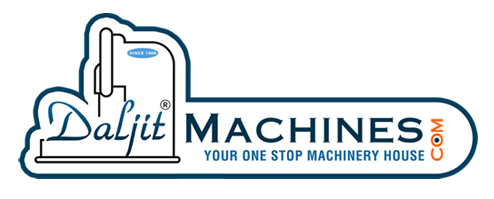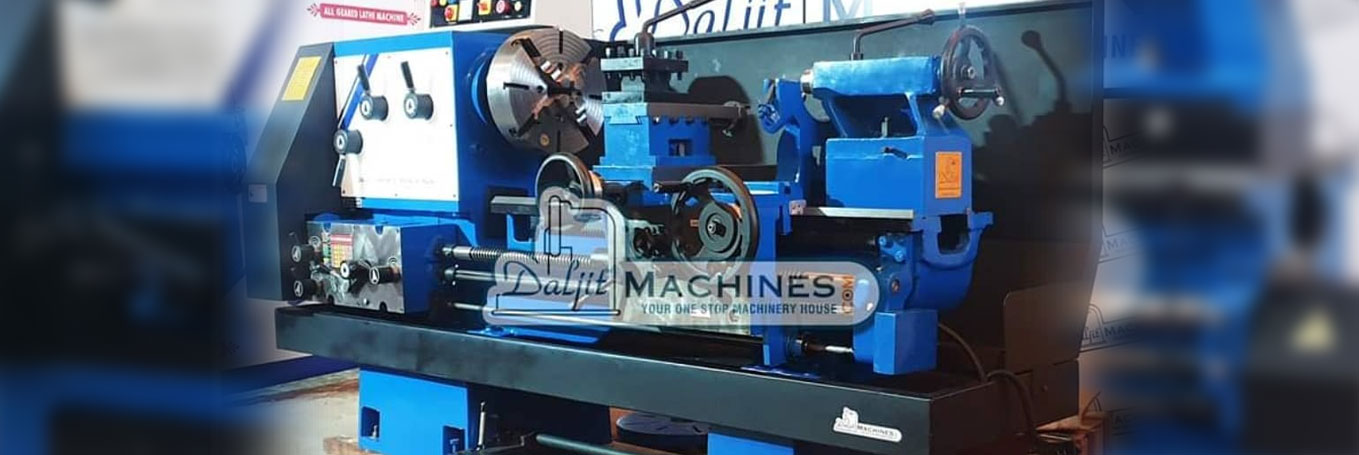Lathe machines are particularly intended as the best cutting machine product by metal working industries. These machines feature robustness, durability, low maintenance cost and facilitates achieve the precision in various industrialized applications. Lathe machine assists to get highly productive machining works with proper accurate dimensions of jobs. It works on the basic principle to cut the material into desired shape with its fixed cutting tool however it can also execute other operations like profiling, knurling, reaming, facing, grooving, counter boring, threading, taper turning, etc.
The lathe is a principle machine tool intended for providing a symmetrical shapes to objects made of metal, wood or other materials. It causes the workpiece to be held and rotated by the lathe and a tool bit is advanced into the work performing cutting act. This major industrial machine constitutes components designed with respect to specific technical specifications. For example, the popular CNC lathe machine is controlled by a computer designed with Computer-Aided Manufacturing (CAM) process which has made it so easier to get jobs done as it is automated with programming codes. Operator has to input the required dimensions for finished product into the program and then the machine performs its assigned duty without human intervention perfectly at great speed and thus helps achieve more flow of production just with its high repeatability function. You get better quality and overall finish.
Varied designs and types of lathe machines are meant for different machining purposes. A type called Bench Lathe machine has practically all the parts of an engine lathe or speed lathe and it carries out most of the operations (cut, knurl, drill, or sand material). This is generally small mounted on a workbench and used typically for small precision work as in the making of gauges, punches and beds for press tools. The bench-type engine lathe is in general power-driven with an electric motor, mounted to the bench at the rear of the lathe headstock, and has a flat leather belt. A number of bench lathes make use of an underneath motor drive where the drive belt goes through a hole in the bench. This mechanism is best suitable for fitting in limited room. These tend to have a longer productive life and give superior quality outcomes.
About the principal parts of a Lathe, it includes:
• The bed is the base for the working parts of the lathe.
• The headstock is usually bolted permanently at one end. The headstock constitutes the head spindle and the mechanism for driving it.
• The headstock spindle is the main rotating part of the lathe attached directly to the workpiece which rotates with it.
• The tailstock is located on the opposite end of the lathe from the headstock. Tailstock carries the dead center to facilitate one end of the work being machined between centers.
• The carriage include the apron, saddle, cross slide and the compound rest which in turn supports the cutting tool in the tool post.
• Apron includes the mechanism that directs the movement of the carriage for longitudinal feed and thread cutting. It manages the lateral movement of the cross-slide.
When selecting a lathe, look at the product specifications and the type of materials you want it to work with.
Tags: about lathe machines all types of lathe machines automatic lathe machines basic operation of lathe machines bench lathe machine best lathe machines best lathe machines in india best lathe machines ndia big lathe machines different types of lathe machines imported lathe machines indian lathe machines introduction of lathe machines lathe machine application lathe machine engineering

